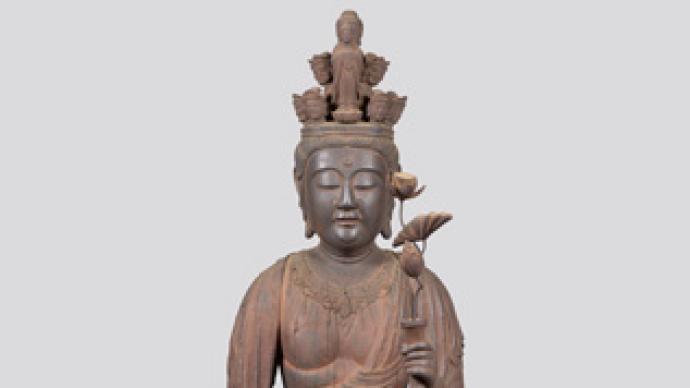
Recently, the special exhibition "Everything about Daan Temple: Buddha and Prayer in the Nara Period" was exhibited at the Nara National Museum in Japan. Through Buddha statues, Buddhist paintings, Buddhist utensils and architectural components, it traces the history of Daan Temple and its important position in the history of Buddhism. Among them, there are 10 Japanese national treasures on display, including many of the most representative wood-carved Buddha statues in the Nara period. According to local Japanese media reports, the 11-faced Guanyin statue of the main body of the main hall of Daan Temple is on display for the first time in 100 years.
Daan Temple is a Koyasan Shingon sect temple located in Nara City, Nara Prefecture, Japan.
The Paper learned that the exhibition will trace the history of Da'an Temple and its important position in the history of Buddhism through 124 cultural relics, including Buddha statues, Buddhist paintings, Buddhist utensils and architectural components, combined with excavation research results. It is reported that the exhibition will be divided into the early stage (April 23-May 22) and the later stage (May 24-June 19), and the exhibits will be replaced before and after.
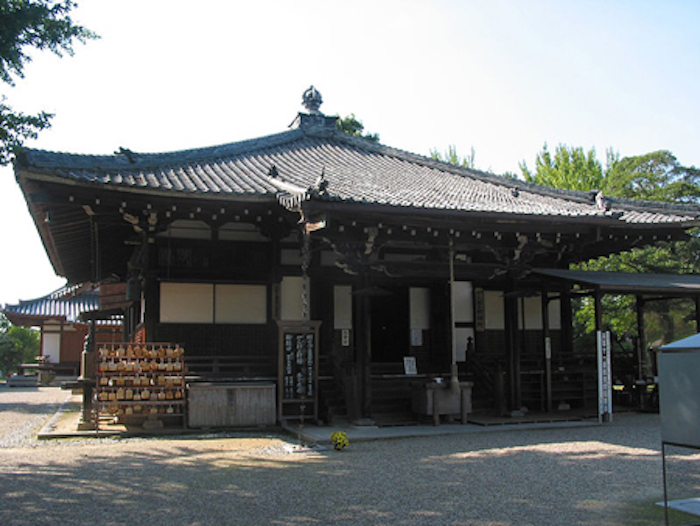
Daan Temple
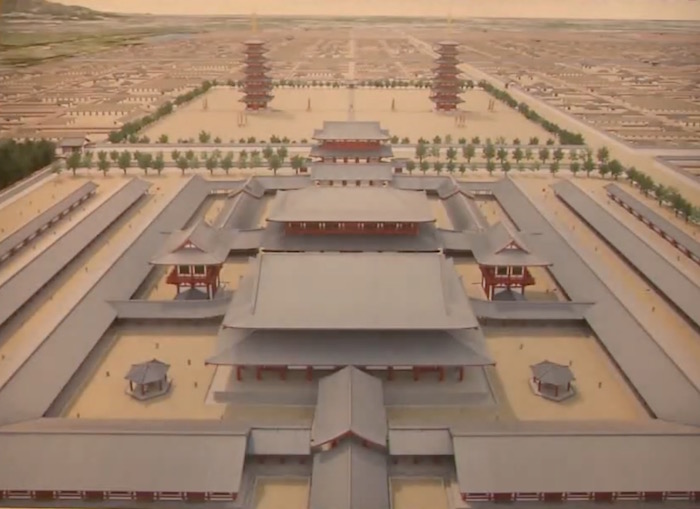
The exhibition hall scene, the historical rendering of Daan Temple
It is said that Da'an Temple started from the Xiongning Temple built by Prince Shotoku of Japan in Xiongning Village to extend the emperor's life. Prince Shotoku, born in 574 and died in 622, was a thinker and statesman in the Asuka period of Japan, and the second son of Emperor Ming. Prince Shotoku believed in Buddhism and vigorously promoted Buddhism during his reign. He once declared Buddhism to the world, and immediately sent monks to study Buddhism in the Sui Dynasty. At the same time, he built large temples such as Horyu-ji Temple and Shitenno-ji Temple in Nara and other places. Since then, Buddhism has become popular in Japan. .Since then, this Jingshe Xiongning Temple has been renamed as Baekje Daji Temple, Gaoshi Daji Temple, and Daguan Daji Temple. After moving the capital to Pingchengjing, it was relocated to the location of Sakyo Liujo and Qijo Sifang. About the 8th century AD, in order to pray for the arrival of peace. , all the people in the world can live happily, and it is named "Da'an Temple".
Da'an Temple is a majestic temple, and it is equally famous as Todai Temple and Xida Temple.
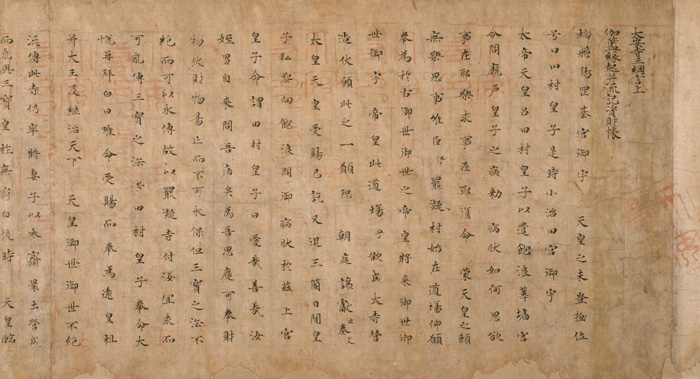
"Daianji Garan Originates and Records Financial Accounts", Nara Period (8th century), Collection of the National Museum of History and Folklore, Important Cultural Property of Japan
Garan’s financial account records the history of Da’an Temple, Buddha statues, Buddhist tools, territories, etc., which are a handful of ancient temple historical materials of all large temples.Daan-ji Temple has long occupied the position of the first temple of Heijo-kyo in the Nara period, with magnificent architecture and exquisite statues. At that time, Daan Temple had two seven-story pagodas in the east and west. Among the seven major temples in Nandu, only Todai Temple and Daan Temple have seven-storied pagodas. The eye-opening mentor of the Great Buddha of Todaiji Temple, the Indian monk Bodhisana and other famous monks converted to Daan Temple and played an important role in the history of Japanese Buddhism.
After entering the Heian period, Daan Temple gradually declined. In the fire of 1017 (the first year of Kwanin), the main towers were all destroyed and no reconstruction was carried out. The existing Daan temples and halls were built from the end of the modern era to the modern era, and the scale has been significantly reduced. The existing garan in the courtyard include the main hall, the hall, the hall of praise and the south gate.

Sumugi decorated with gold utensils and iron nails, excavated from the site of Taikandaiji Temple, Asuka period (7th-8th century), collected by Nara Institute of Cultural Properties
The object shown above is a large ornate decorative metal piece mounted on the front end of the roof corner wood, and the nail heads are made of long flower-shaped nails. From this, it can be seen that the predecessor temple built in the land of Asuka, the Daikandaiji Temple, has a high status.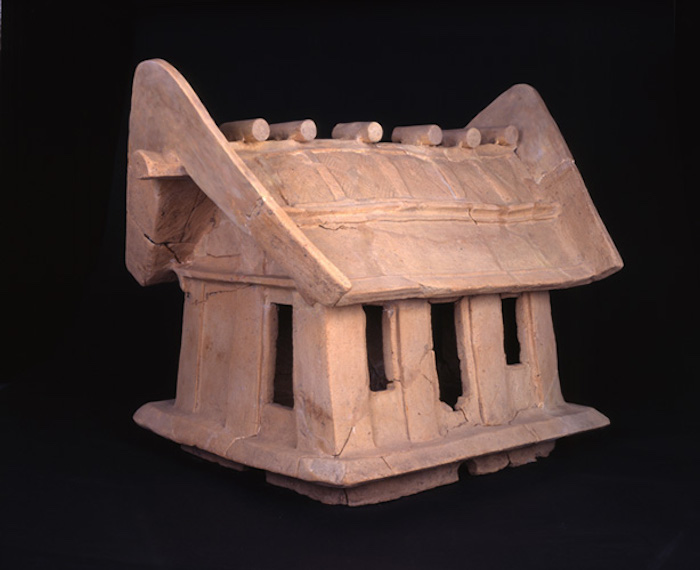
House-shaped pottery figurine, 5th century (Kofun period), designated as a cultural property by Nara City
At the same time that Daan Temple moved the capital to Heijingjing, Garan was built in the corner of Sakyo. The pottery figurines shown in the above picture are large-scale pottery figurines unearthed from the back round tomb located in the front of the temple area.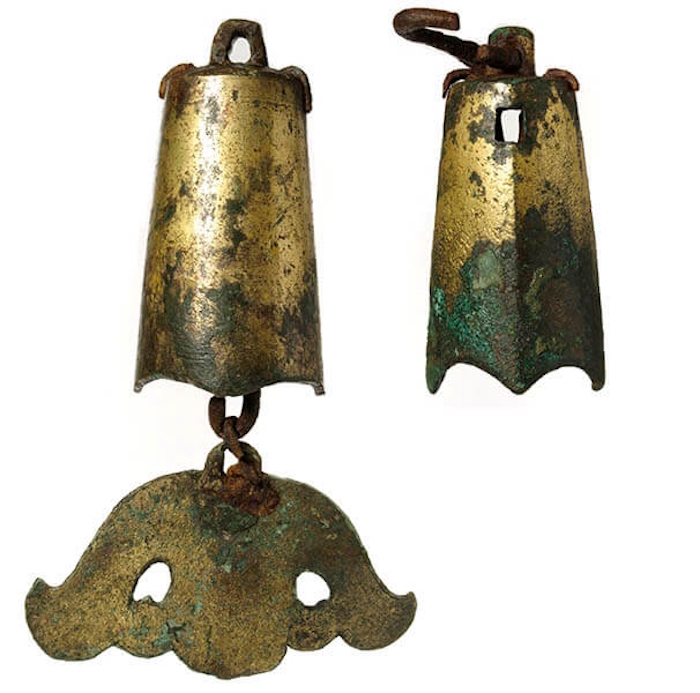
Fudo, excavated from the former site of Daan-ji Temple, Heian period (9th century), Nara City Buried Cultural Property Survey Center
In the past, the Daan-ji Pagoda was a seven-storied twin pagoda second only to the Todai-ji Pagoda. The tower is tall and gilded, showing the majesty of the tower. The exhibit in the picture above is the wind duo hanging on the phase wheel of the west tower.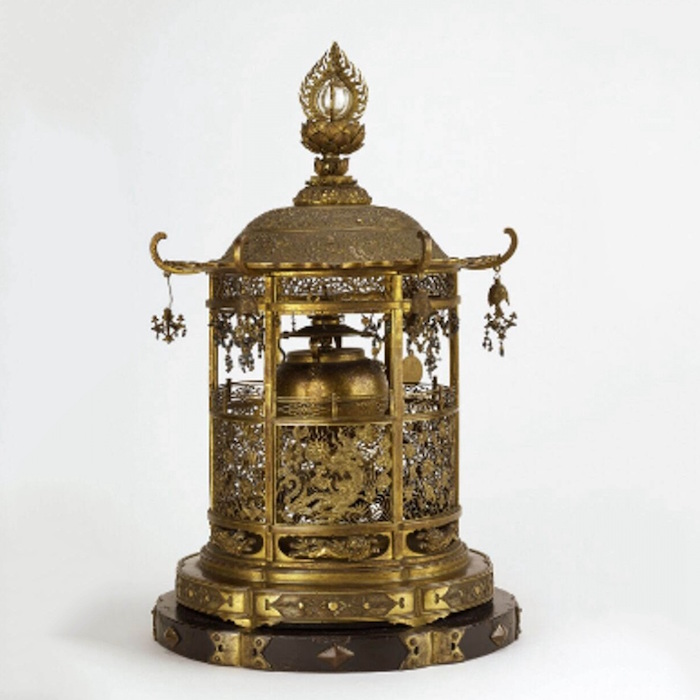
Gold and bronze openwork relic container, Kamakura-Northern and Southern Dynasties, Nara Nishidai-ji Temple, National Treasure of Japan
The gold and bronze openwork relic container is exquisitely carved and is the highest masterpiece of the relic container. The relic container was once housed in Daan Temple.The 9 existing Buddha statues in Daan Temple are regarded as one of the most representative wood carving group statues in the Nara period, and although the main Buddha "Shakyamuni Statue" no longer exists, it is said to be superior to the seated statue of Yakushi Nyorai in Horyu Temple, which is now a national treasure of Japan. ", and profoundly influenced the production of Buddha statues in Japan from ancient times to the Middle Ages.
In the main hall of Daanji Temple: the eleven-faced Kannon statue is enshrined in the hall, which was revived in the Meiji period (1868-1911); the horse-head Kannon statue is enshrined in the Sitang Hall, which was revived in the Heisei period (1989-present); In the Hall of Zanyang, that is, the Hall of Treasures, the Bukong Suo Guanyin, Yangliu Guanyin, Sheng Guanyin and the Four Heavenly Kings are enshrined. It was revived in the Showa period (1926-1989).
Eleven-faced Guanyin statue
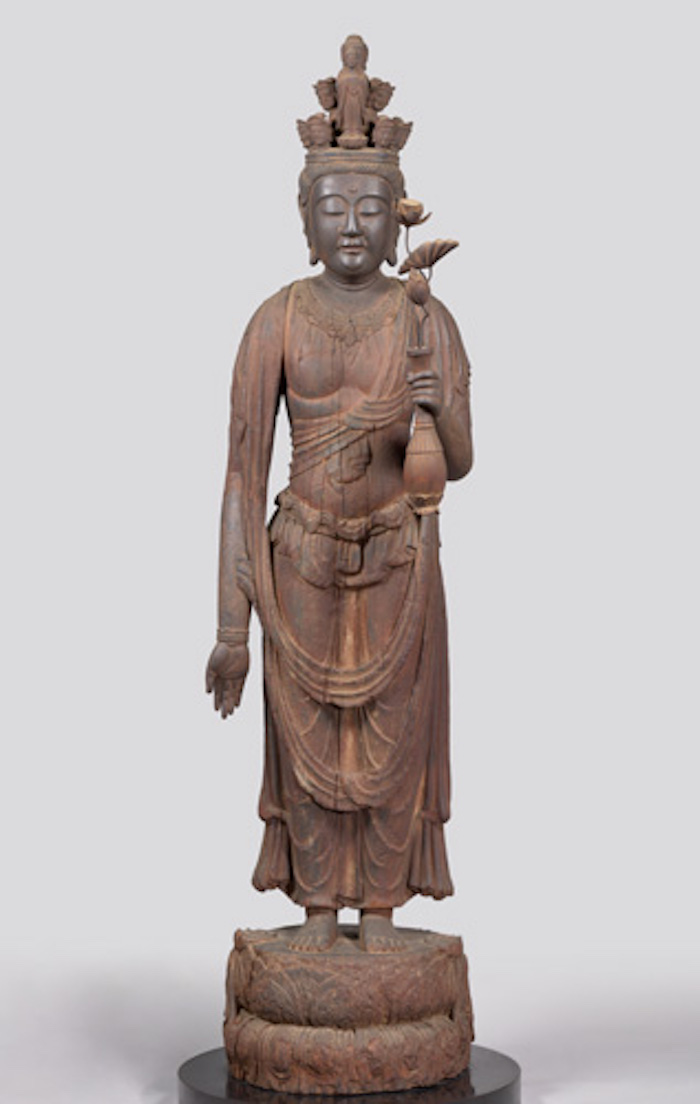
Standing Statue of Kannon with Eleven Faces, Nara Period (8th century), Daian-ji Temple, Nara, Important Cultural Property of Japan, previous exhibit
The statue of Eleven-faced Guanyin is a hidden Buddha deity in the main hall of Daan Temple. Although the head is supplemented, the well-proportioned body shape shows the characteristics of the statue of the Nara period. The clothing and jewelry are exquisitely carved and heavily influenced by Chinese and Tang Dynasty Buddha statues. According to local Japanese media reports, the main statue of the eleven-faced Kannon is exhibited for the first time in 100 years.Horse-headed Guanyin statue
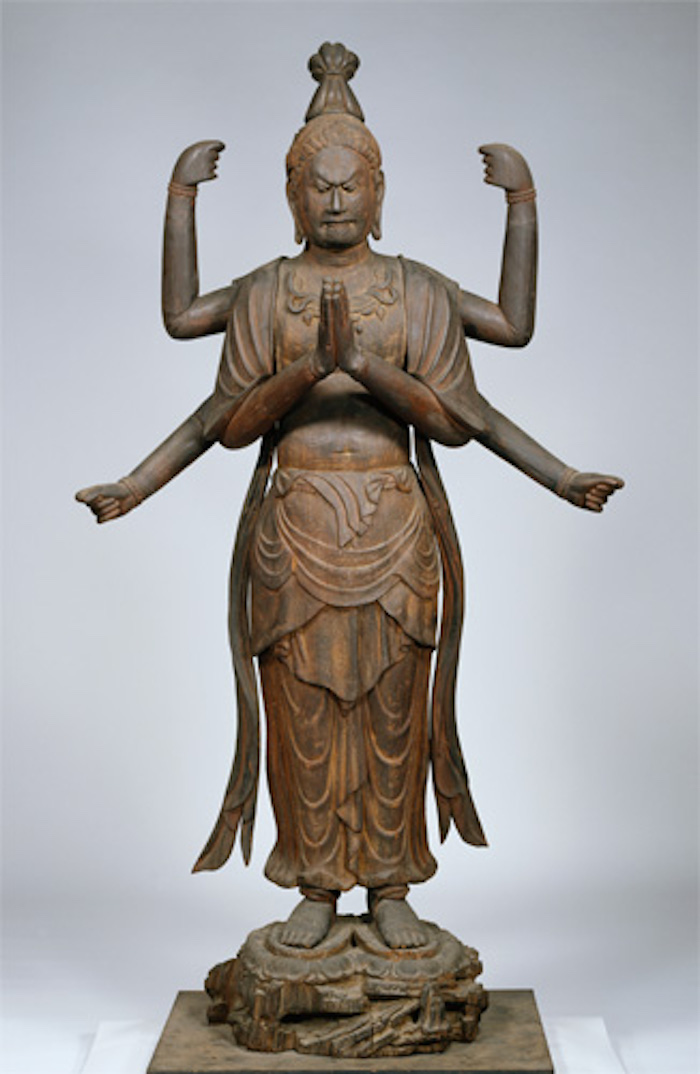
Standing Statue of Kannon with Horse Head, Nara Period (8th century), Nara Daian-ji Temple, Important Cultural Property of Japan, later exhibit
This statue is the secret Buddha placed in the hall of Daan Temple. Judging from the expression of the angry expression, the snake wrapped around the pectoral and ankle, the possibility of being built as a horse-headed Guanyin from the beginning is high. The six arms and bun extending from the body were added later.Chuan Yangliu Guanyin Statue
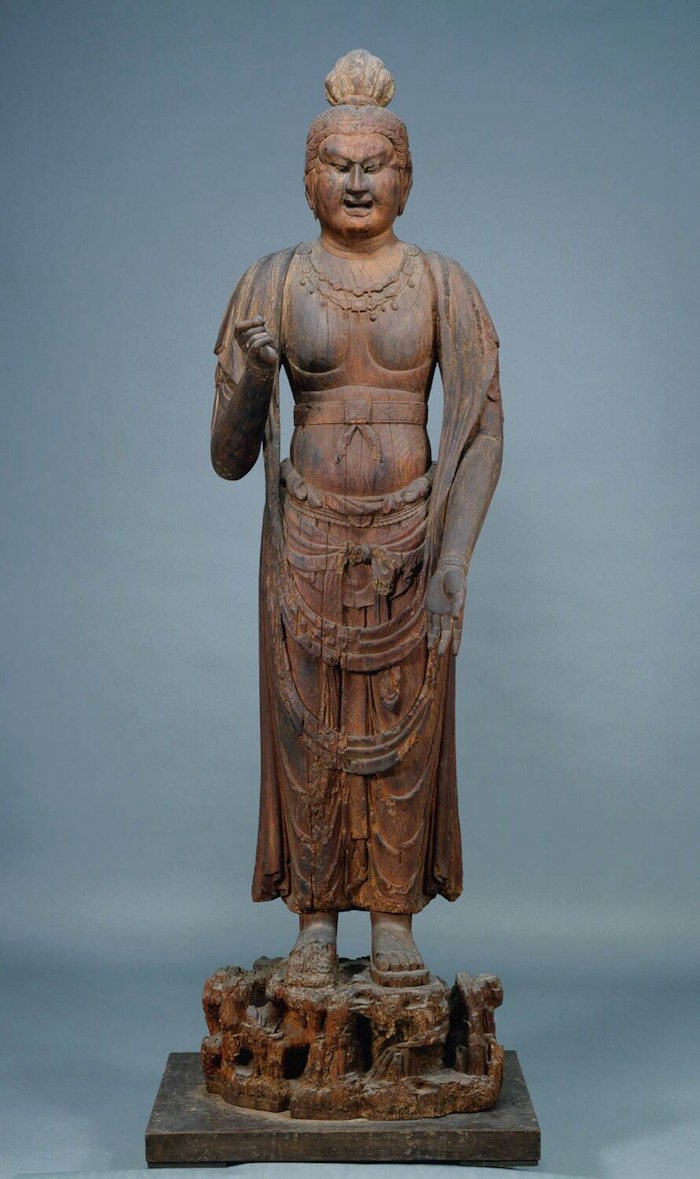
Standing willow Kannon statue, Nara period (8th century), Nara Daian-ji Temple, Important Cultural Property of Japan
This statue is pointed out to be similar in style to the statue of the eleven-faced Avalokitesvara of the deity. An angry expression on his face, clothes, etc. are in the style of a bodhisattva, and his original name is unknown. It is possible that it was an early esoteric statue introduced in the Nara period.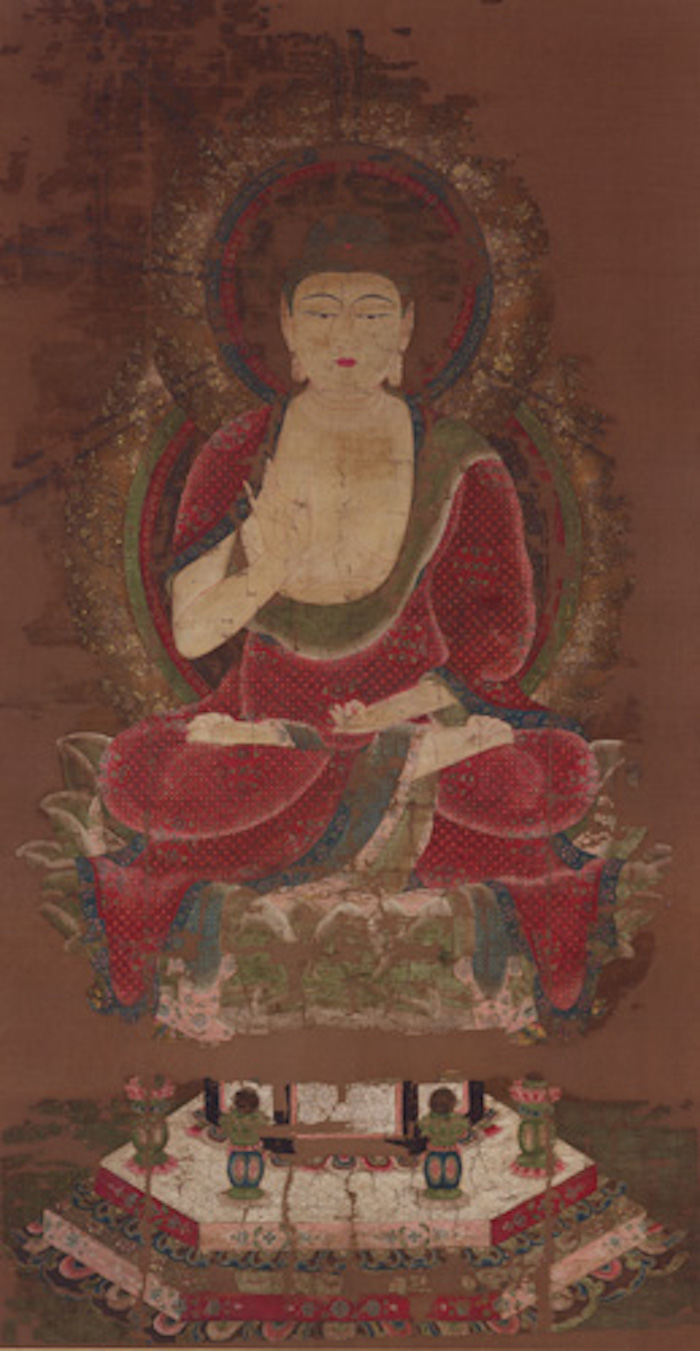
"Statue of Shakyamuni Buddha", Heian Period (12th century), Kyoto Shingoji Temple, National Treasure of Japan, on display from June 7th to June 19th
This work depicts Shakyamuni in a gorgeous vermilion coat, and is a masterpiece of Heian Buddhist painting. The graceful and ideal posture projects the statue of Sakyamuni in Daan-ji Temple, which was regulated by many statues of Sakyamuni in the Heian period.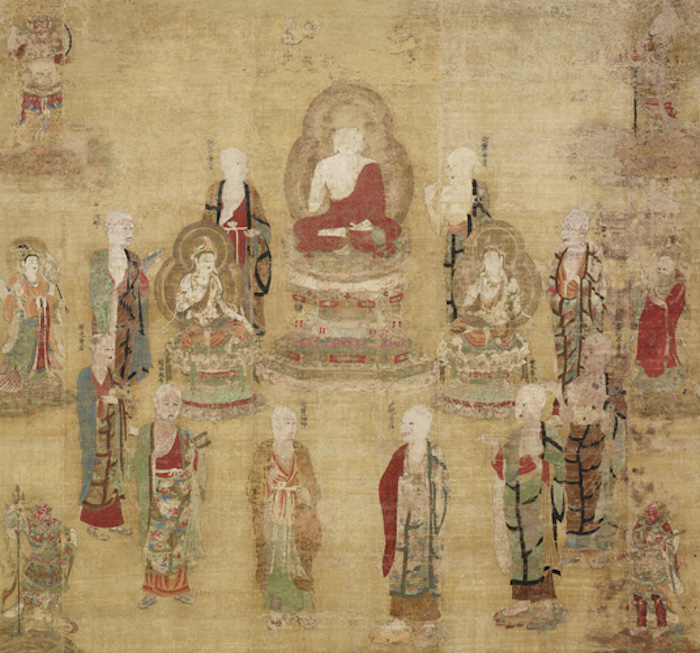
"Kusha Mandala", Heian Period (12th century), Todai-ji Temple, Nara, National Treasure of Japan, later exhibit
This is a portrait depicting the deities of the Kushe Sect, one of the six southern sects. The Sakyamuni in the center is a Buddhist painting from Todai-ji Temple in the Nara period, and its image is basically the same as the statue of Sakyamuni in Daan-ji Temple recorded in the records.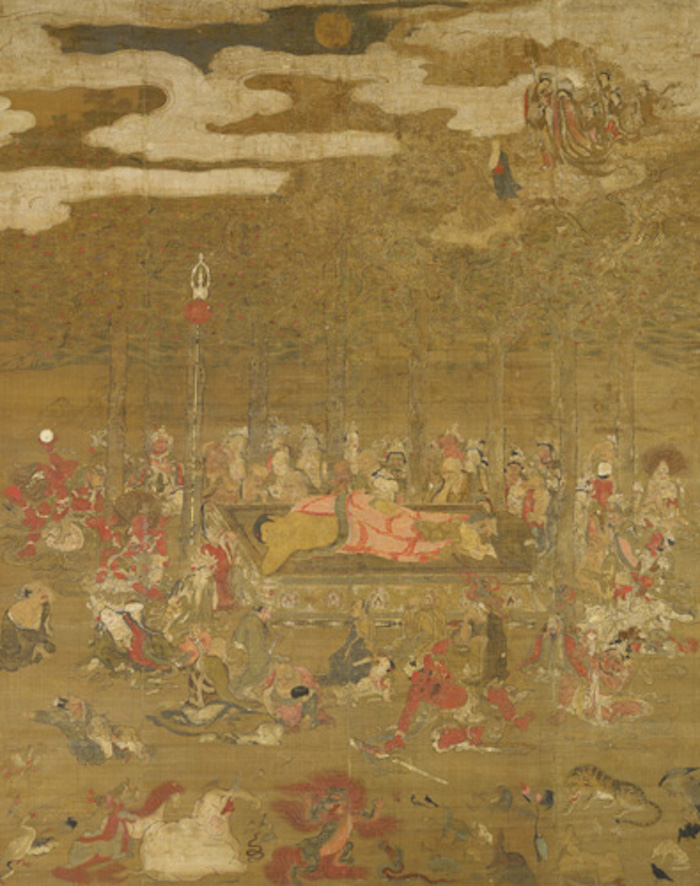
"Buddha Nirvana", the 4th year of Yasunaga in the Northern and Southern Dynasties (1345), Nezu Art Museum, Tokyo, early exhibition
This work shows the scene of Sakyamuni Nirvana under the Sara Tree. The painter of this picture belongs to Kofukuji Temple. As a Buddhist painter of Daanji Painting Studio, he is also responsible for making Daanji Buddhist paintings influenced by Kofukuji Temple.Daan-ji Temple was also the most international Buddhist temple in Japan at that time, attracting monks from all over Japan and even overseas, such as Bodishana, Kukai, and Sumitomo. In its heyday, the number of monks could reach 1,000, witnessing the spread and development of Buddhist culture during the Nara period.
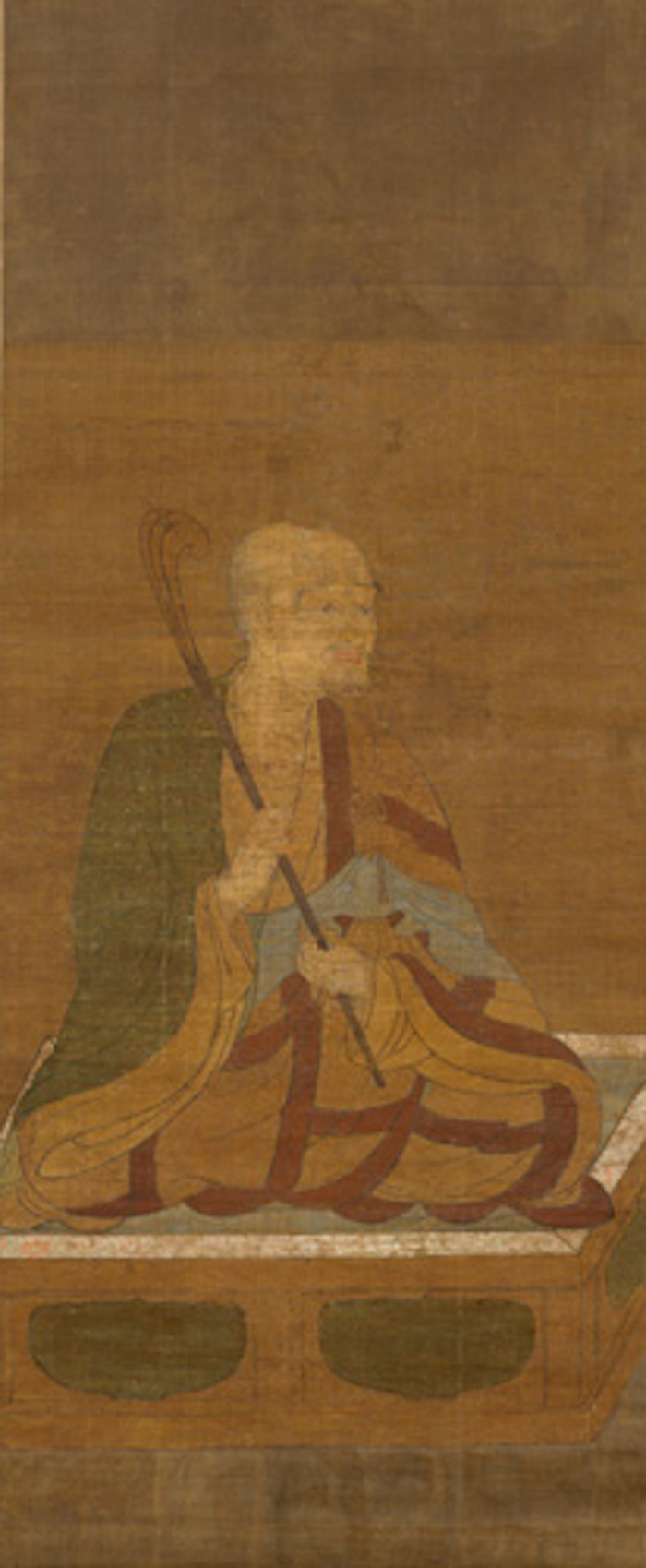
Statue of a lawyer, Muromachi period (14th-15th century), Nara National Museum
Lawyer Daoci studied at Ximing Temple in Chang'an during the Tang Dynasty and contributed to the construction of Da'an Temple after returning to China. This work was introduced to the E'an Temple of the Eda clan, a clan of Doci origin, in the form of an image of the regent Prince Shotoku.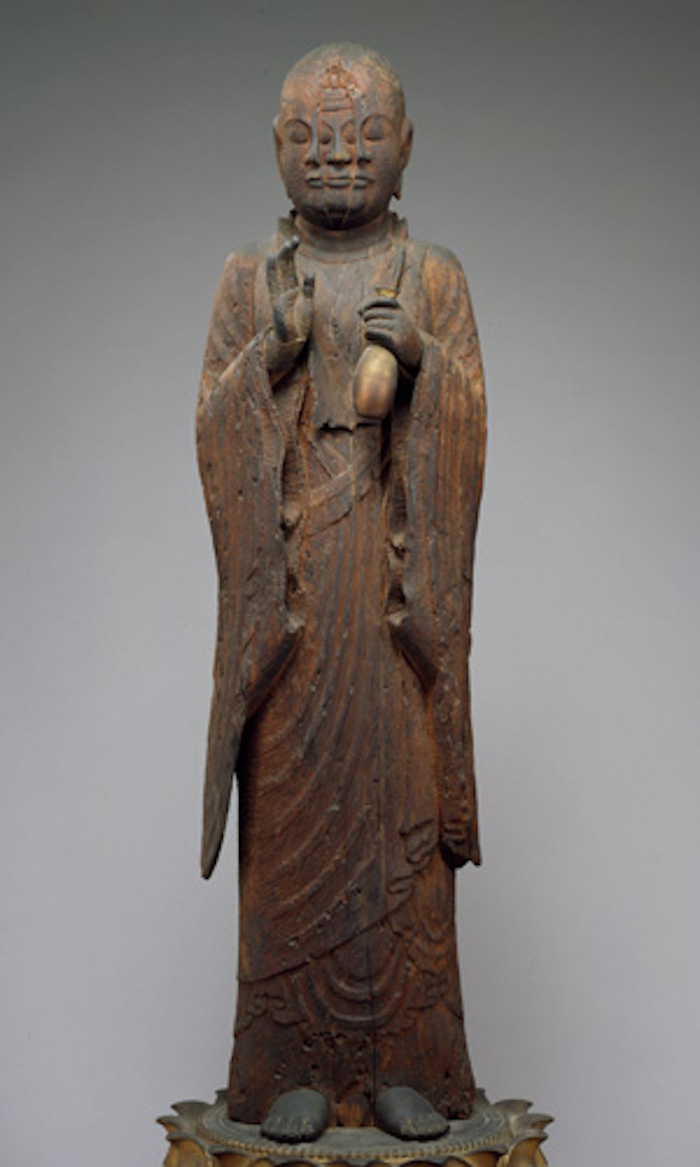
Standing Statue of Monk Hoji, Heian Period (11th century), Kyoto, Saigoji Temple
This statue shows Chery with the eleven-faced Avalokitesvara on the face of the Chinese monk Baozhi. It is said that there used to be a statue of Hoji in the same shape at Daan-ji Temple.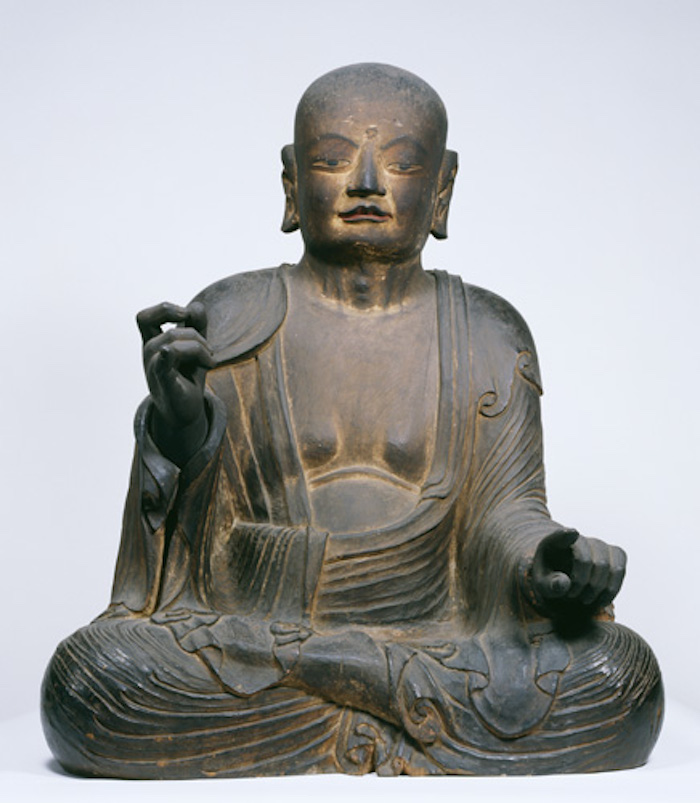
Seated Statue of a Praetorian Lawyer, Heian Period (9th century), Kyoto Shinji Temple
It is said to be the statue of the monk and sect of Daanji Temple who founded Ishimizu Hachimangu Shrine. This cultural relic is a wooden statue with a majestic sense of volume.In addition, it is said that Emperor Koren, who ascended to the throne at an advanced age during the Nara period in Japan, enjoyed health and longevity by drinking warm sake in a bamboo tube. Therefore, Da'an Temple holds the "Bamboo Wine Festival" event every year on the anniversary of Emperor Guangren's death, also known as "Guangren Society". The annual Guangren Society Day is set on January 23. On the same day, Da'an Temple held a prayer ceremony in the main hall to eliminate disasters and illnesses, as well as health and longevity. For drivers and people who do not drink alcohol, Daan Temple will also prepare "bamboo water".

Pottery pillow, excavated from the former site of Daan Temple, Tang Dynasty, China (8th century), collection of Nara Institute of Cultural Properties
According to legend, Dao Ci, a monk who participated in the construction of Da'an Temple, brought back a large number of Tang Sancai from the Tang Dynasty. After pressing Baoxiang Huawen with a mold, they were colored with three-color glaze, and a Japanese native pottery pillow imitating the Tang Sancai was also made.The exhibition will be on view until June 19.
(This article is compiled from the official website of the Nara National Museum)